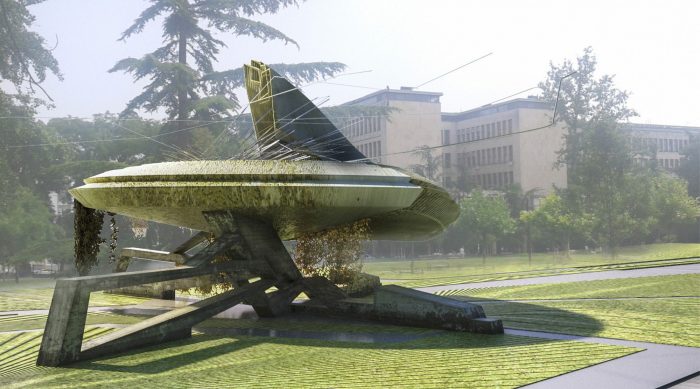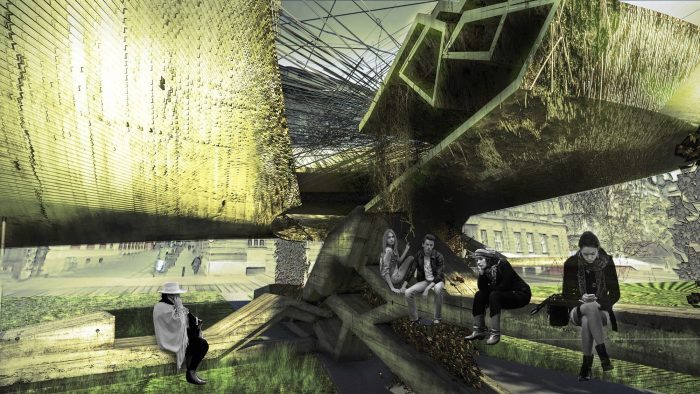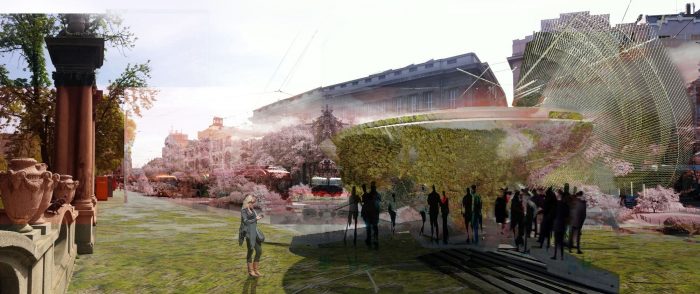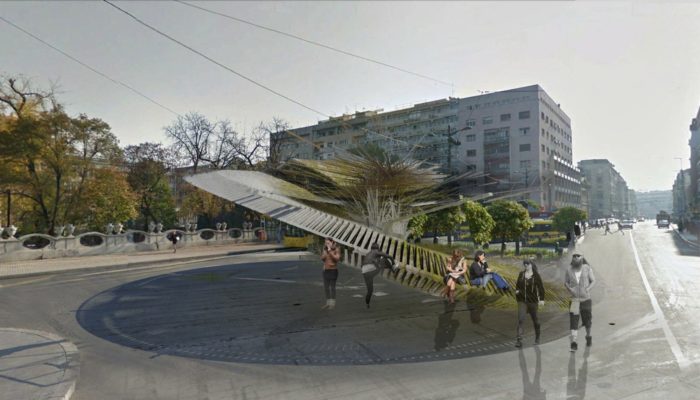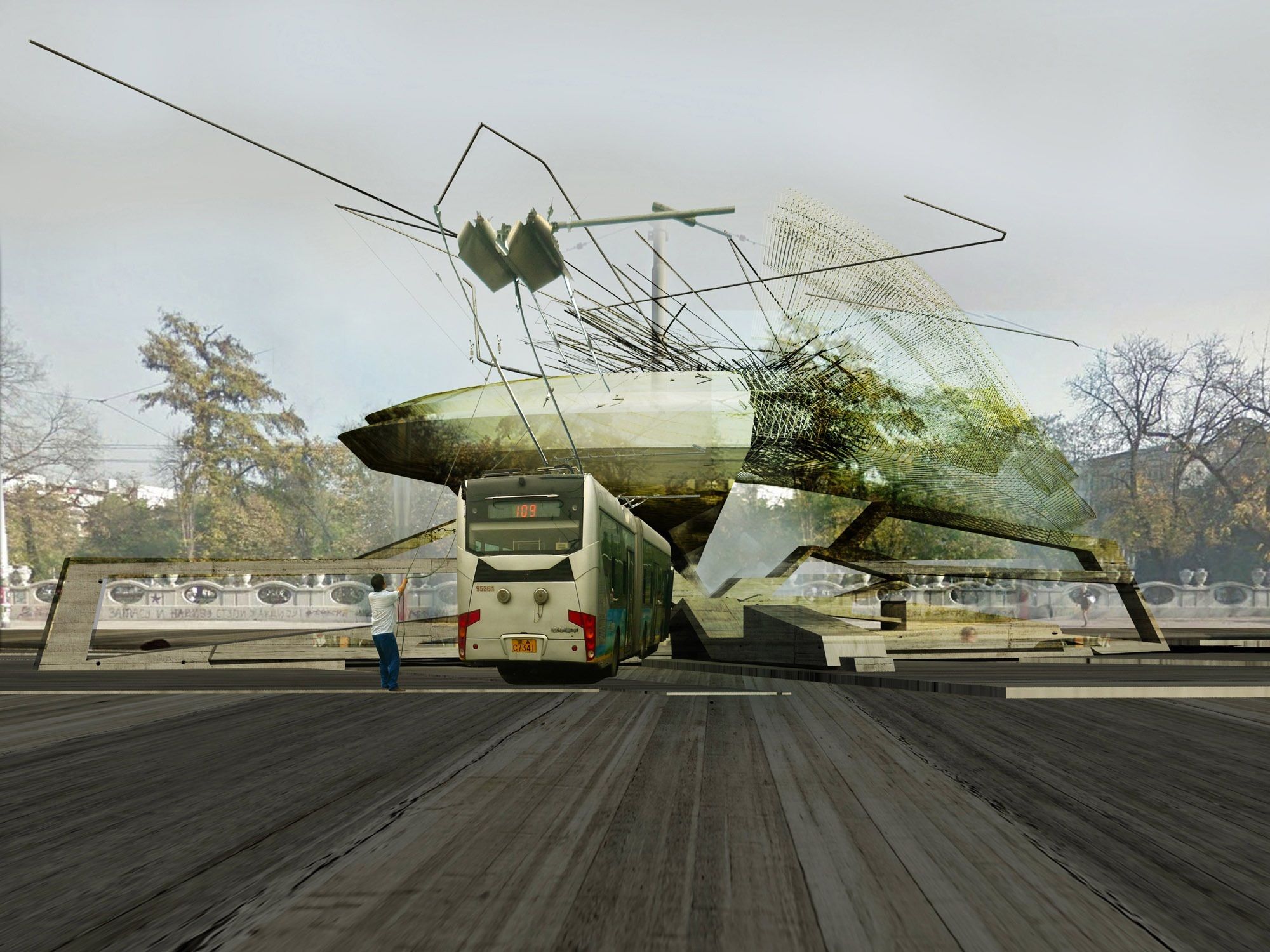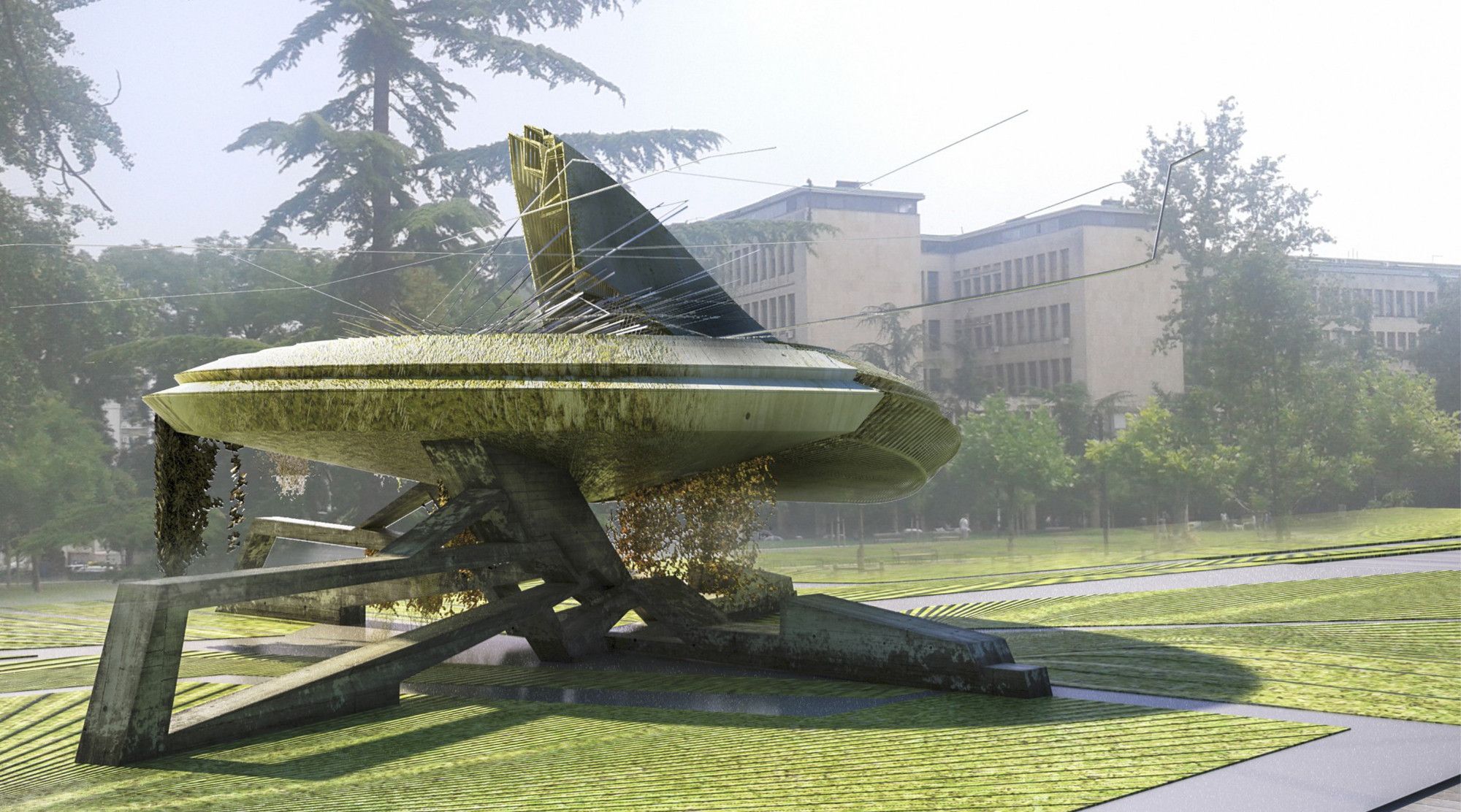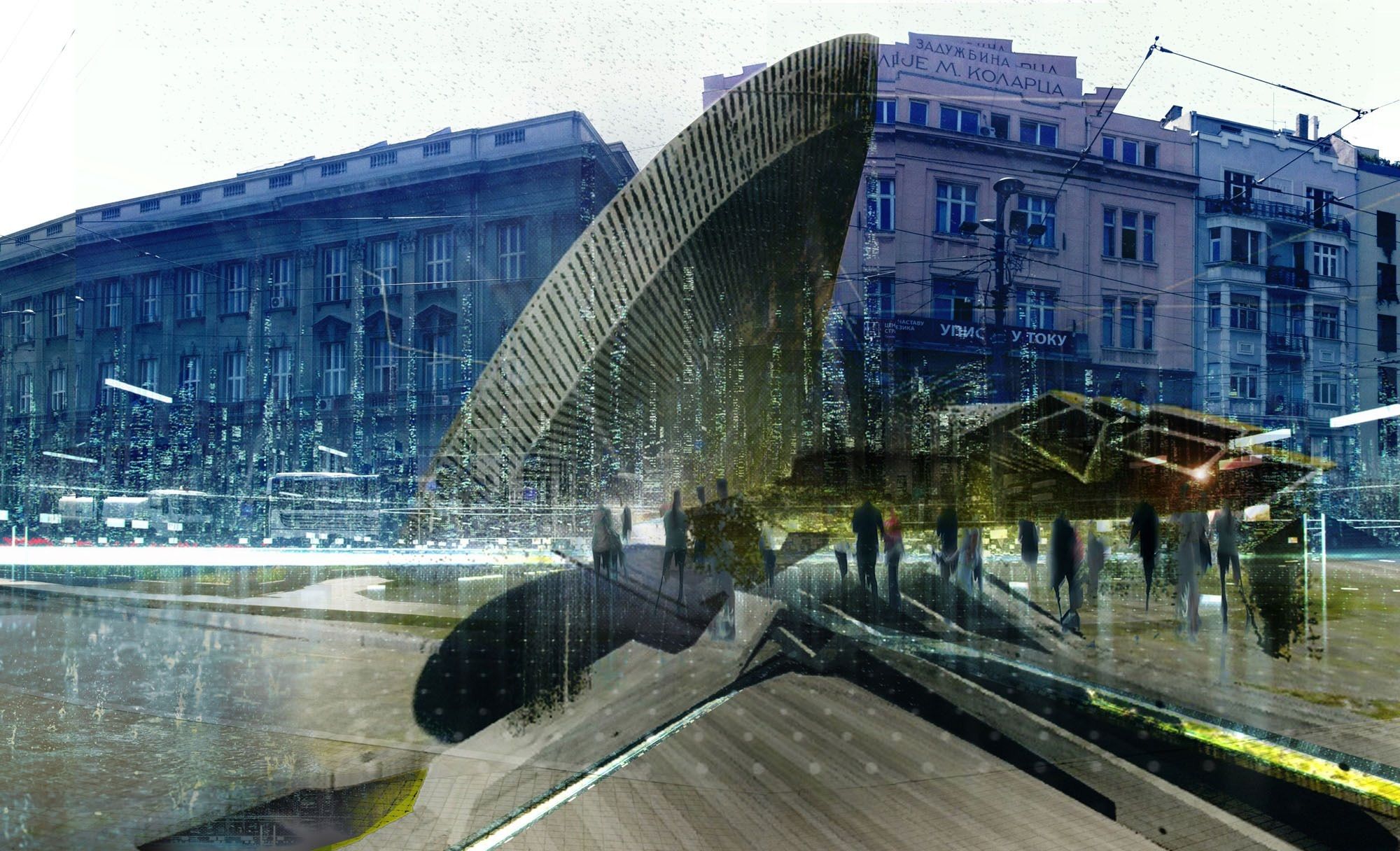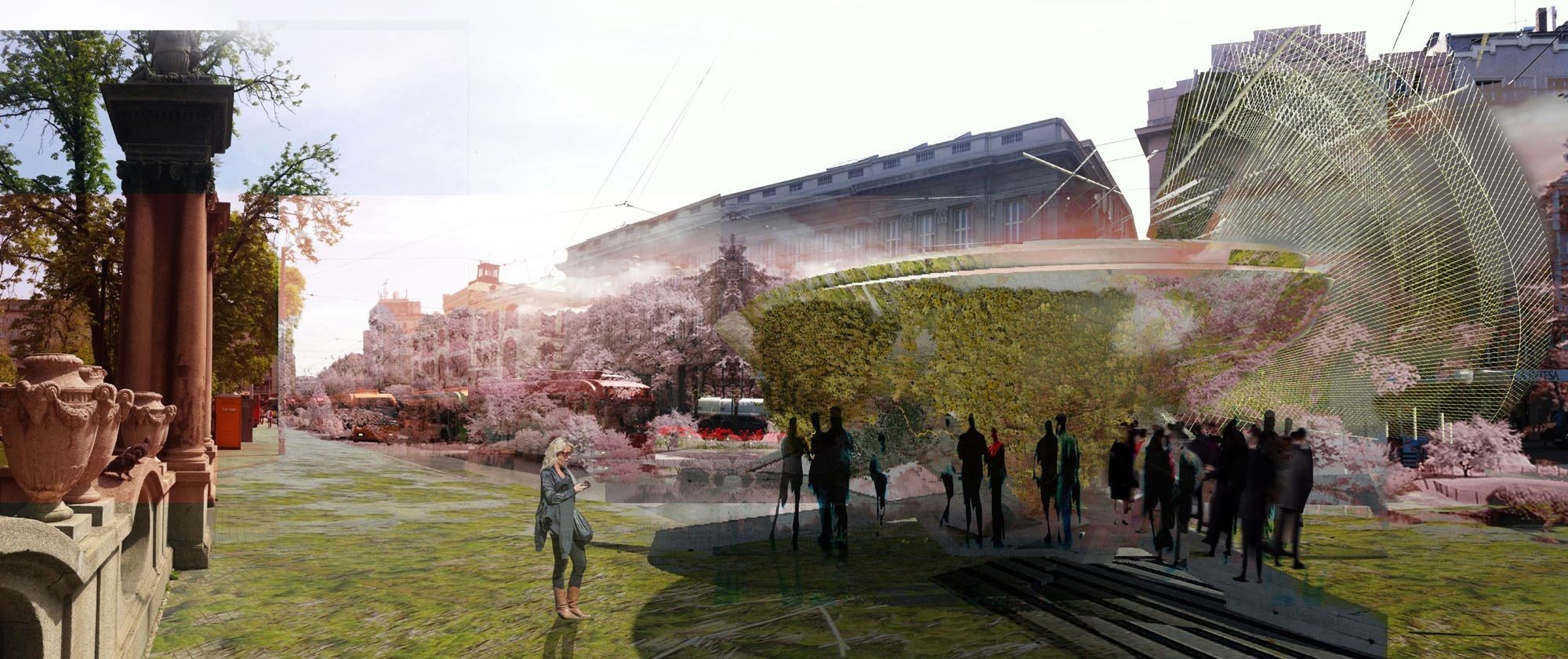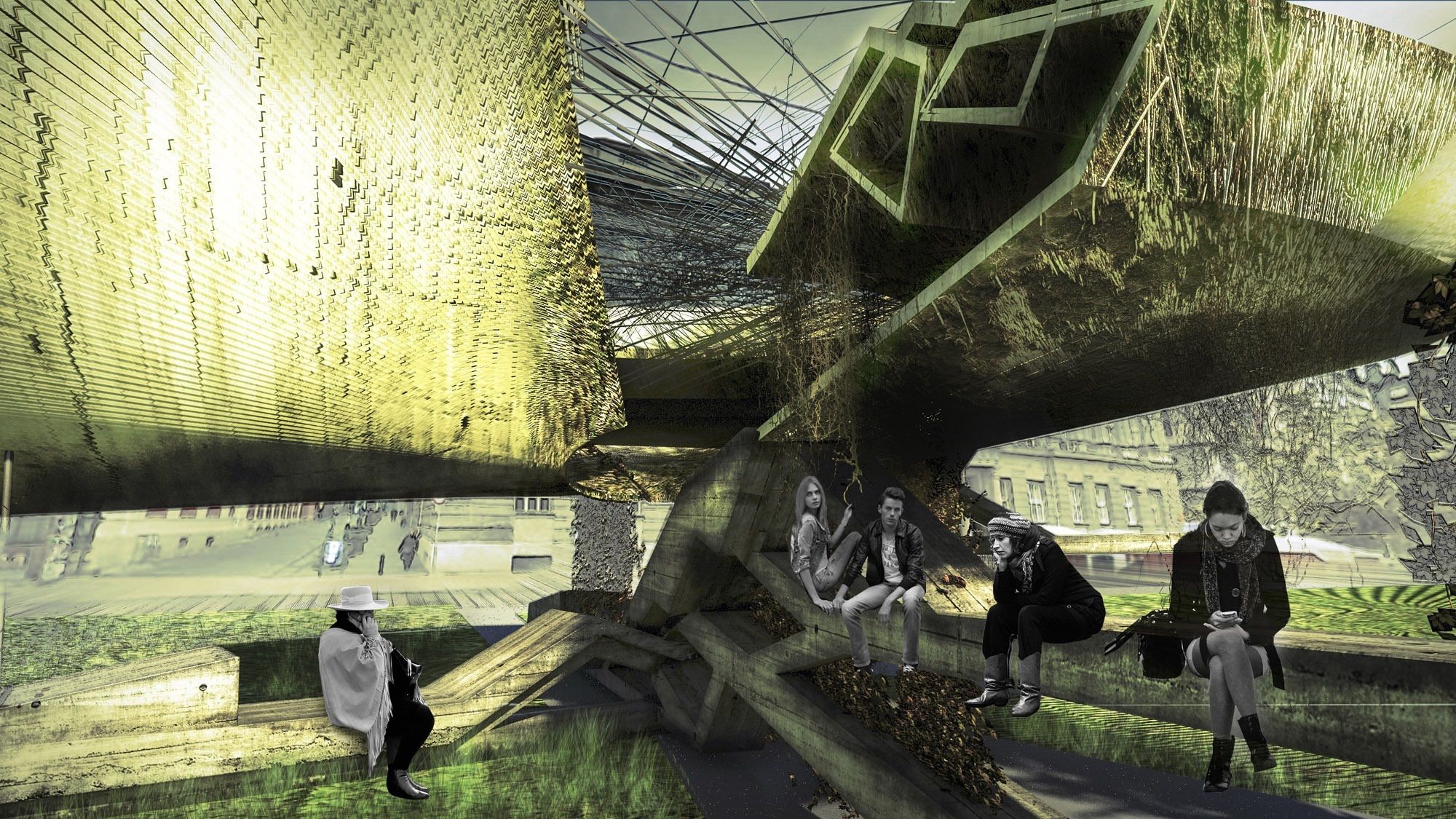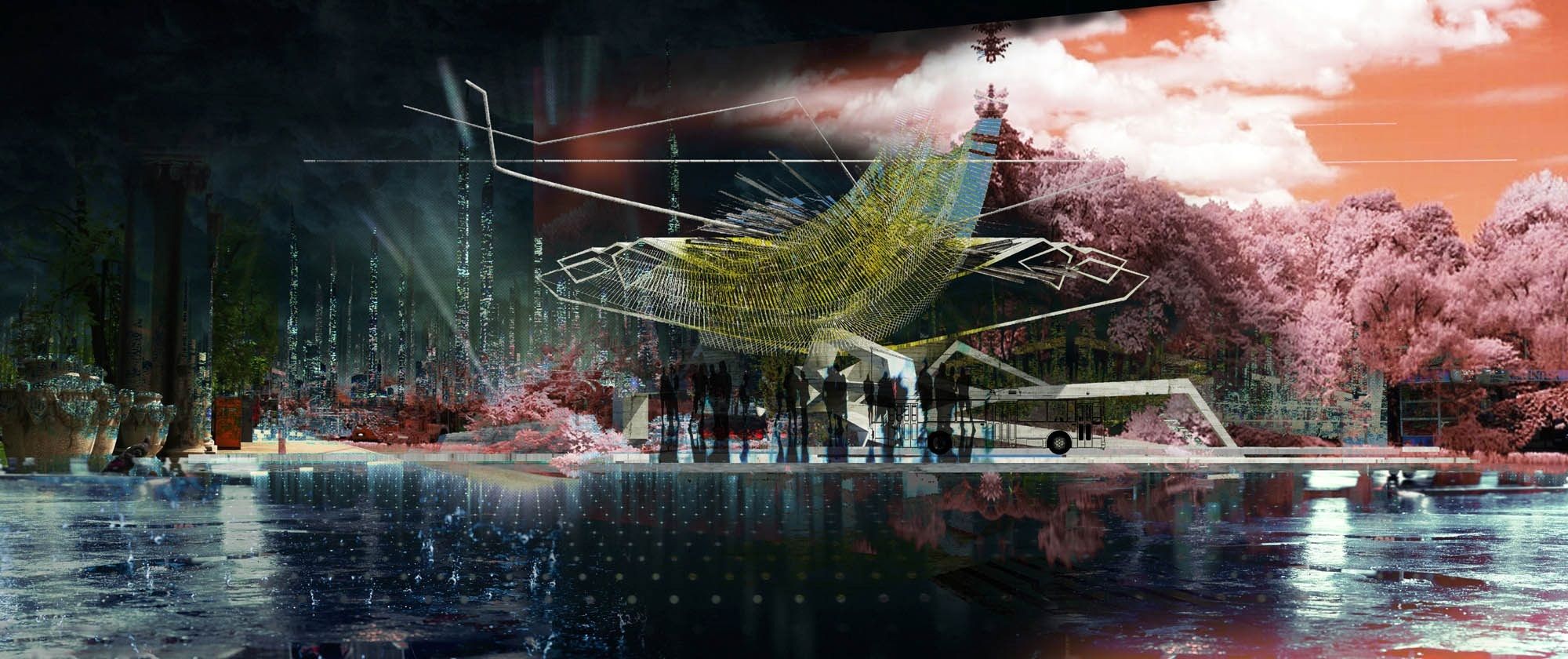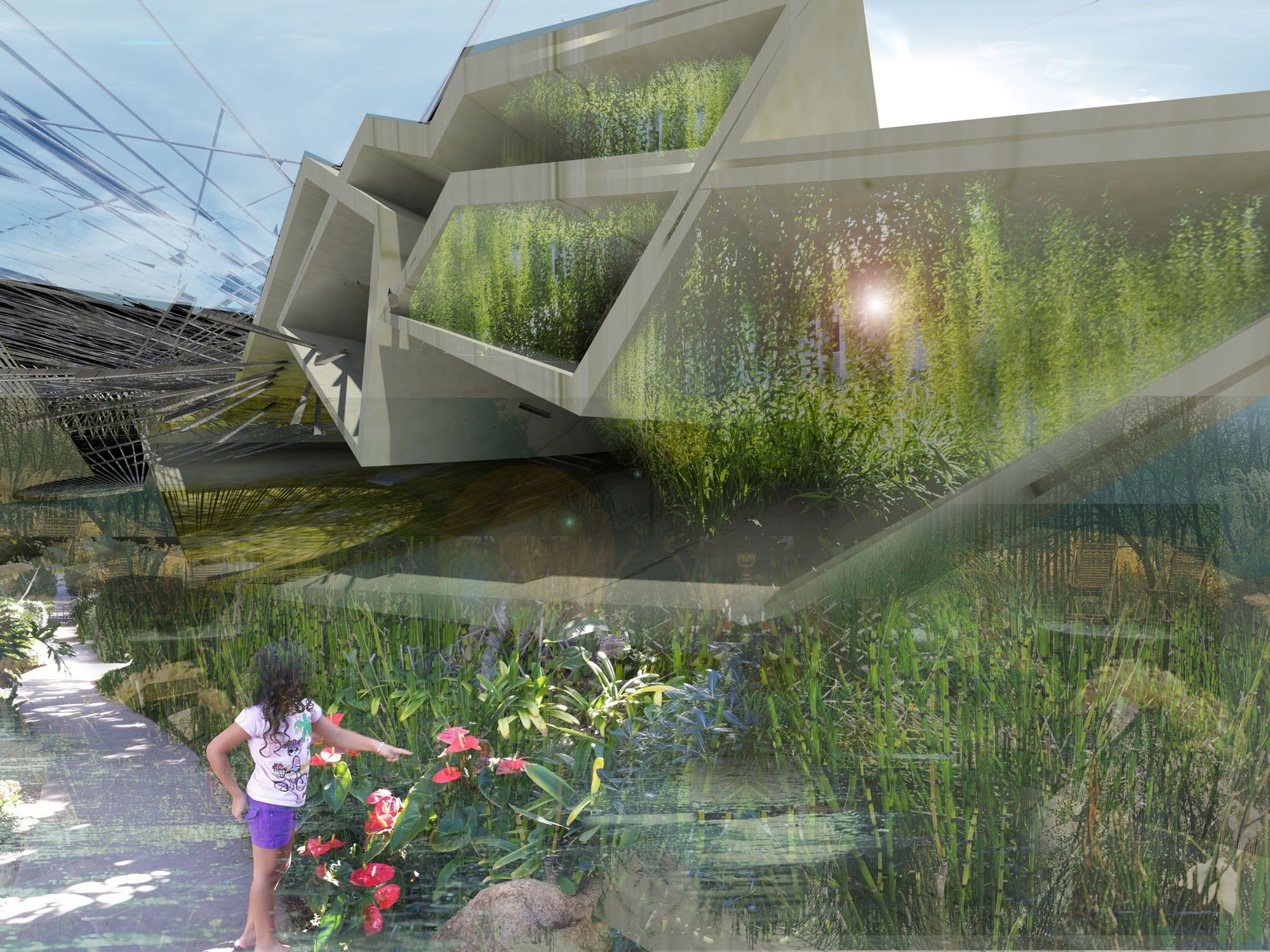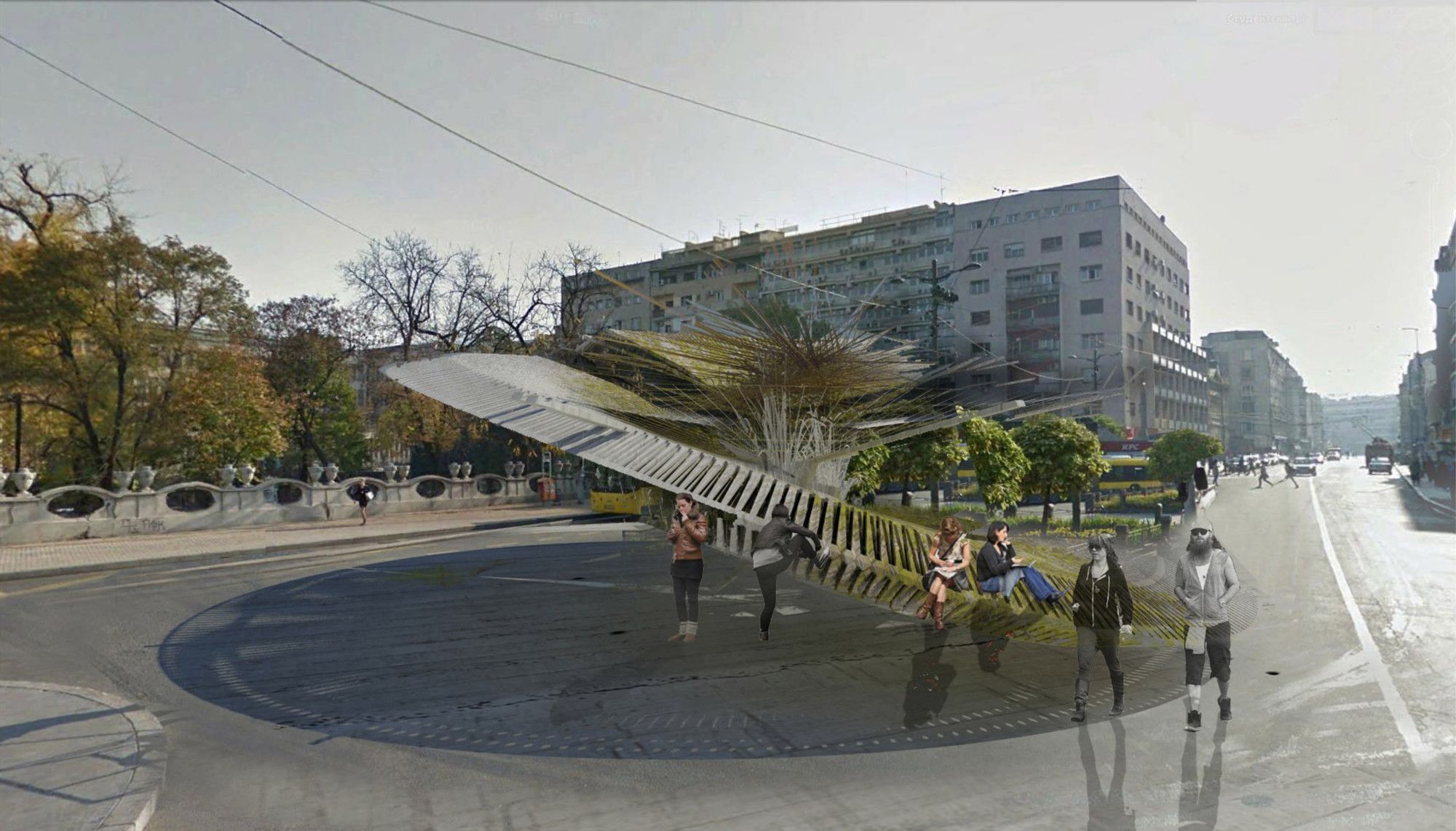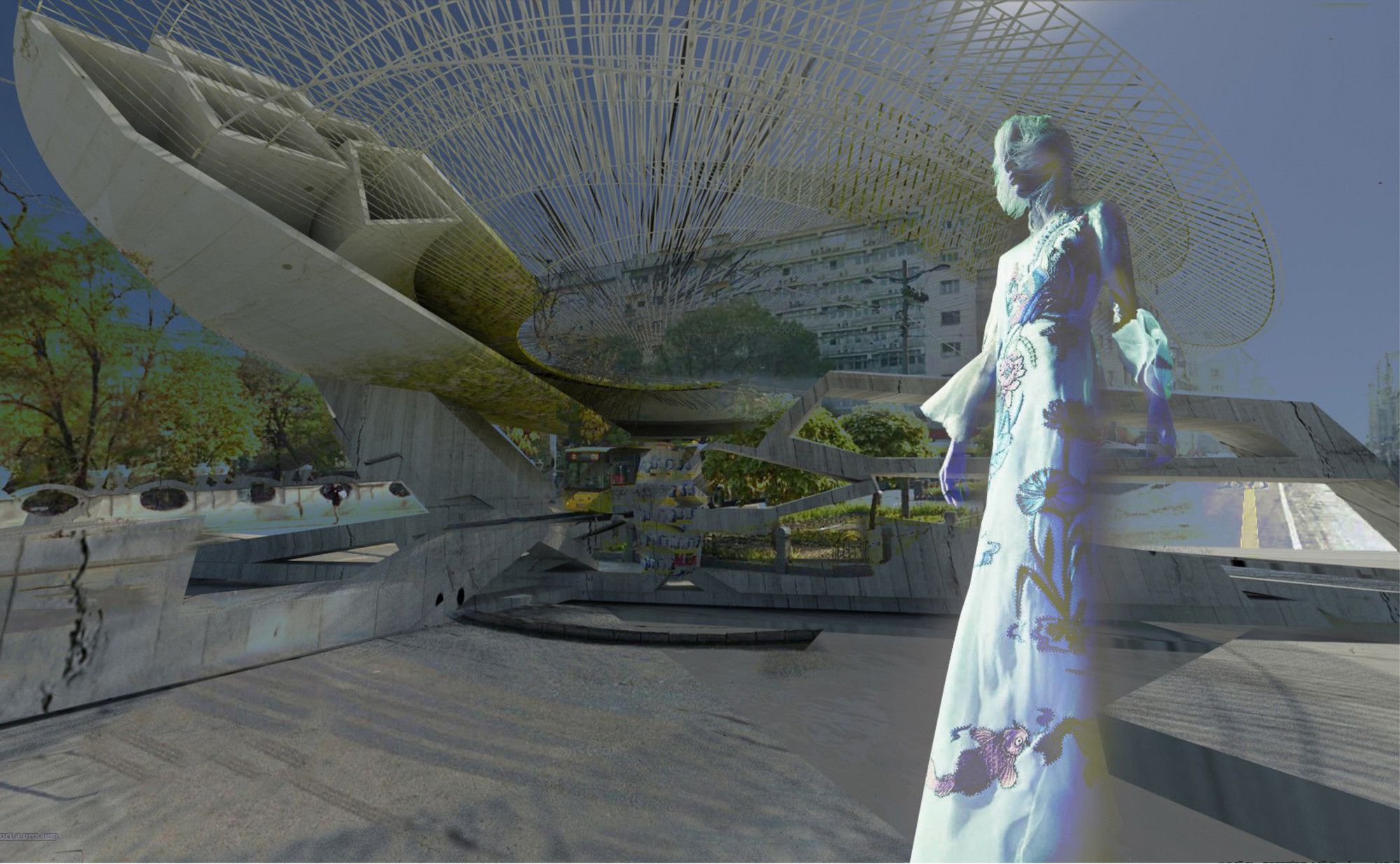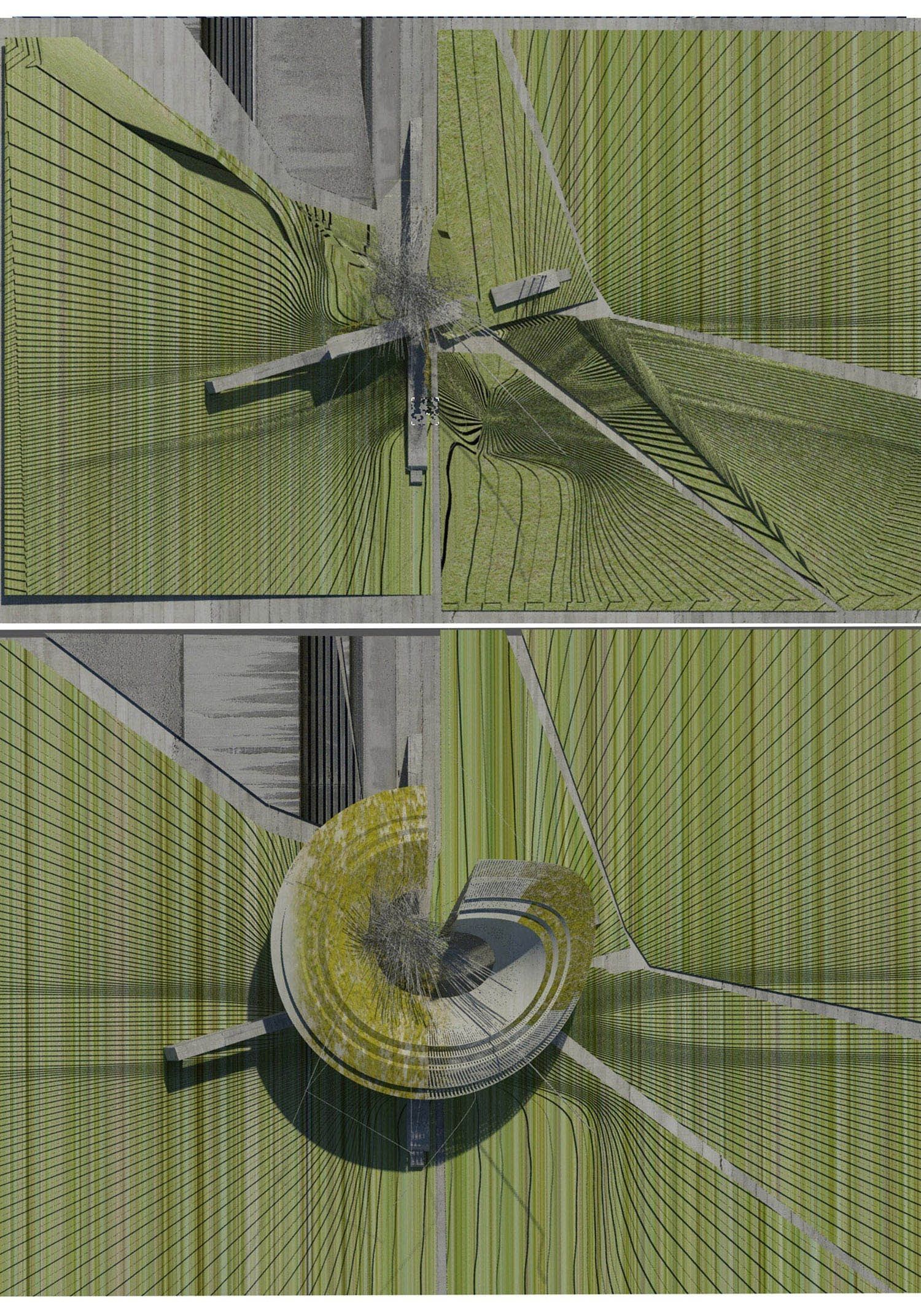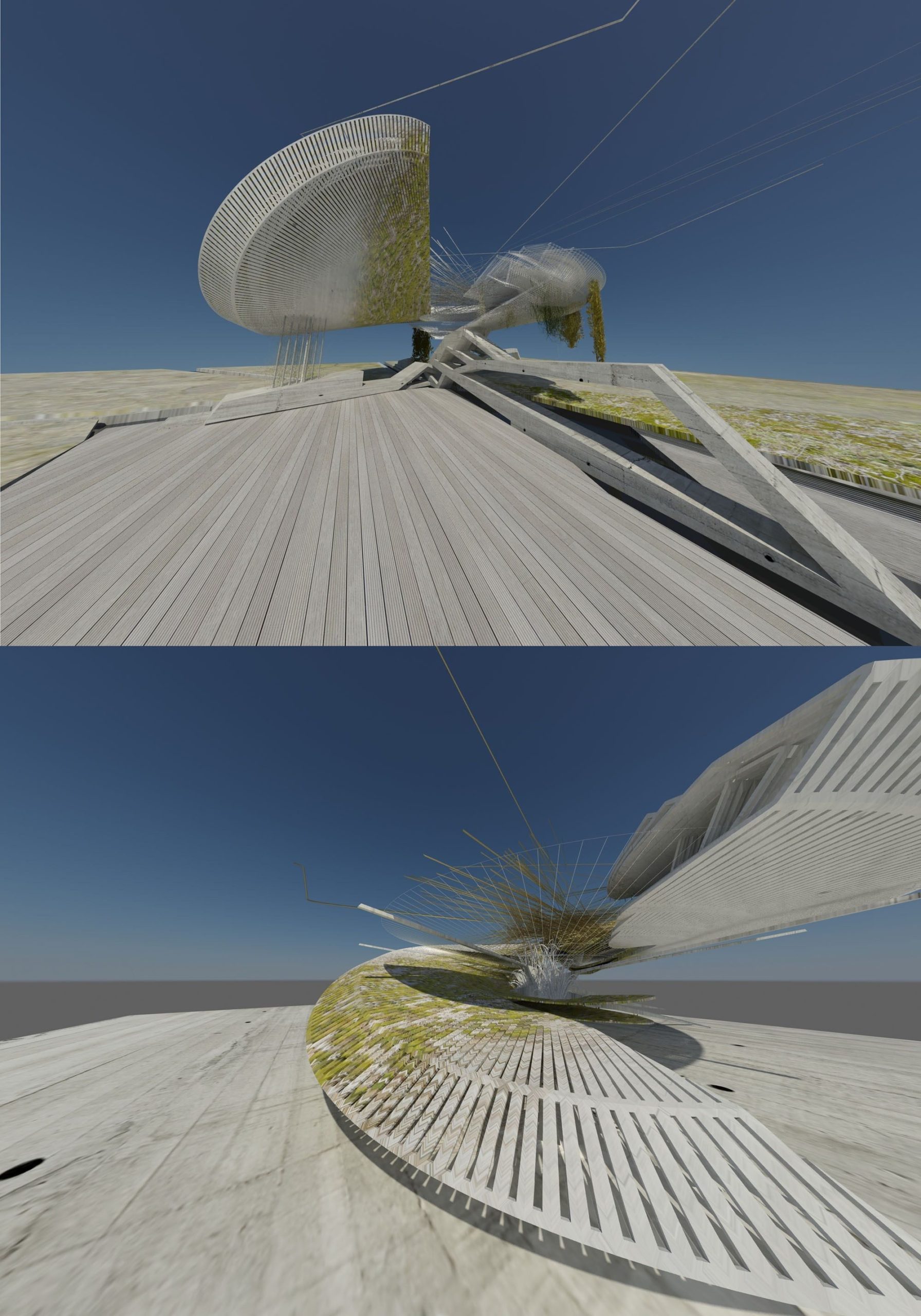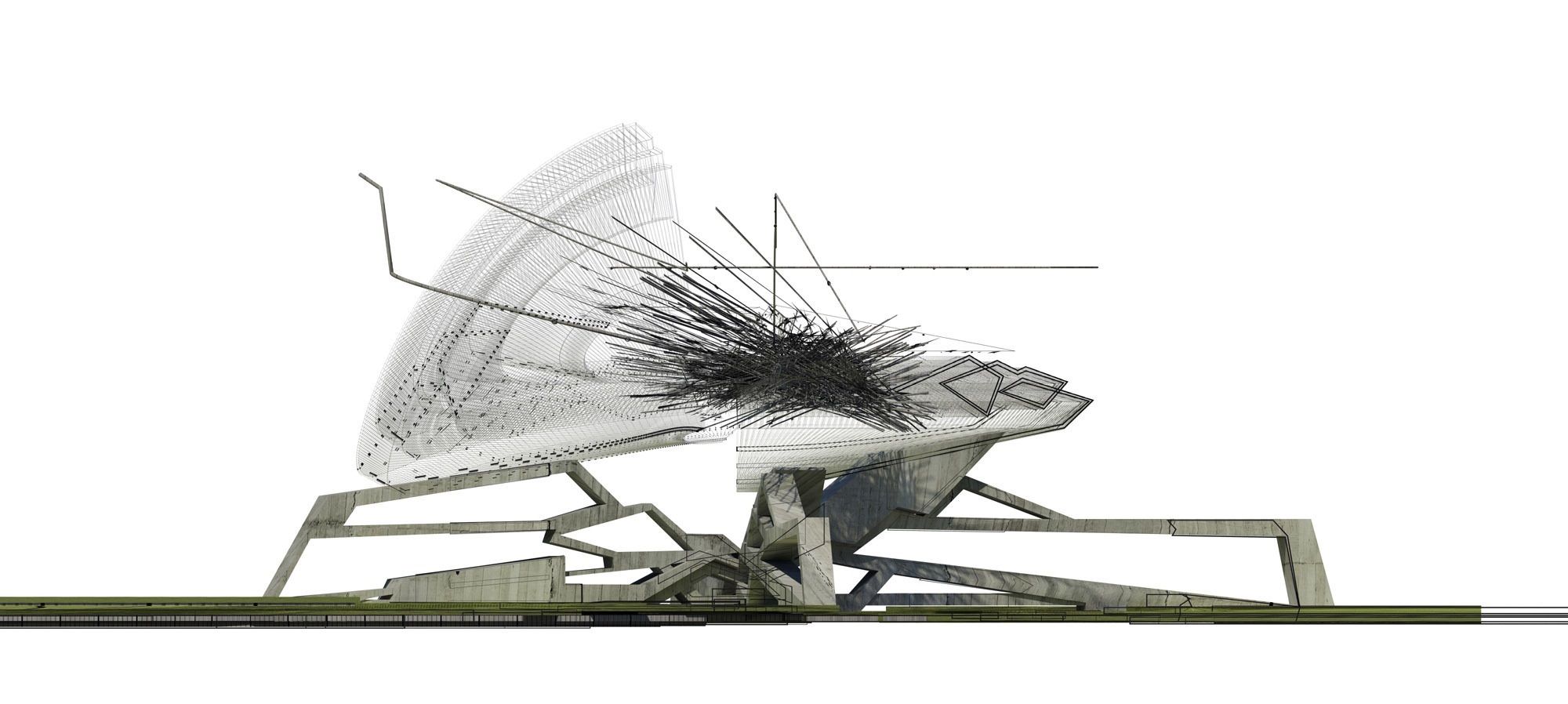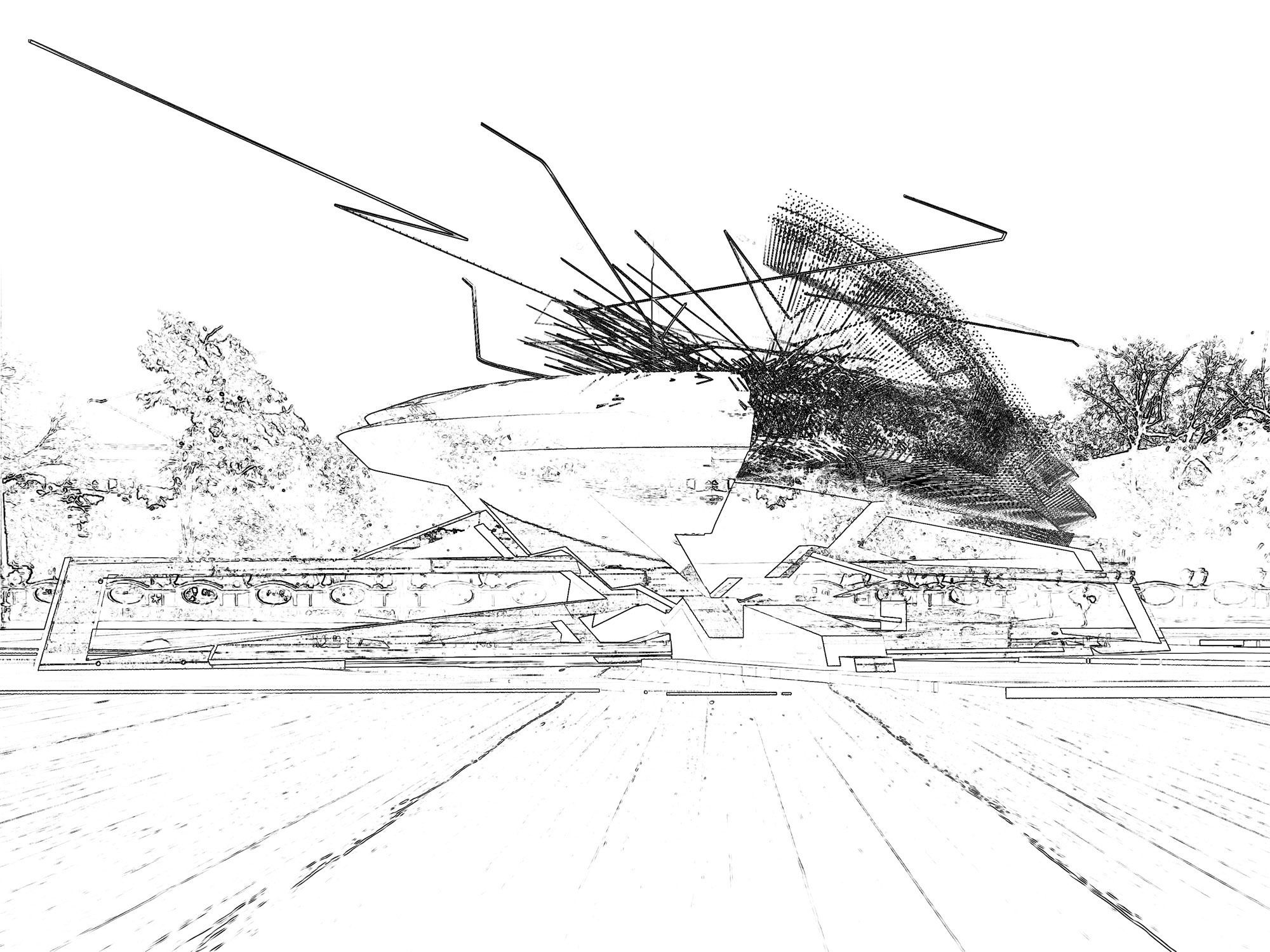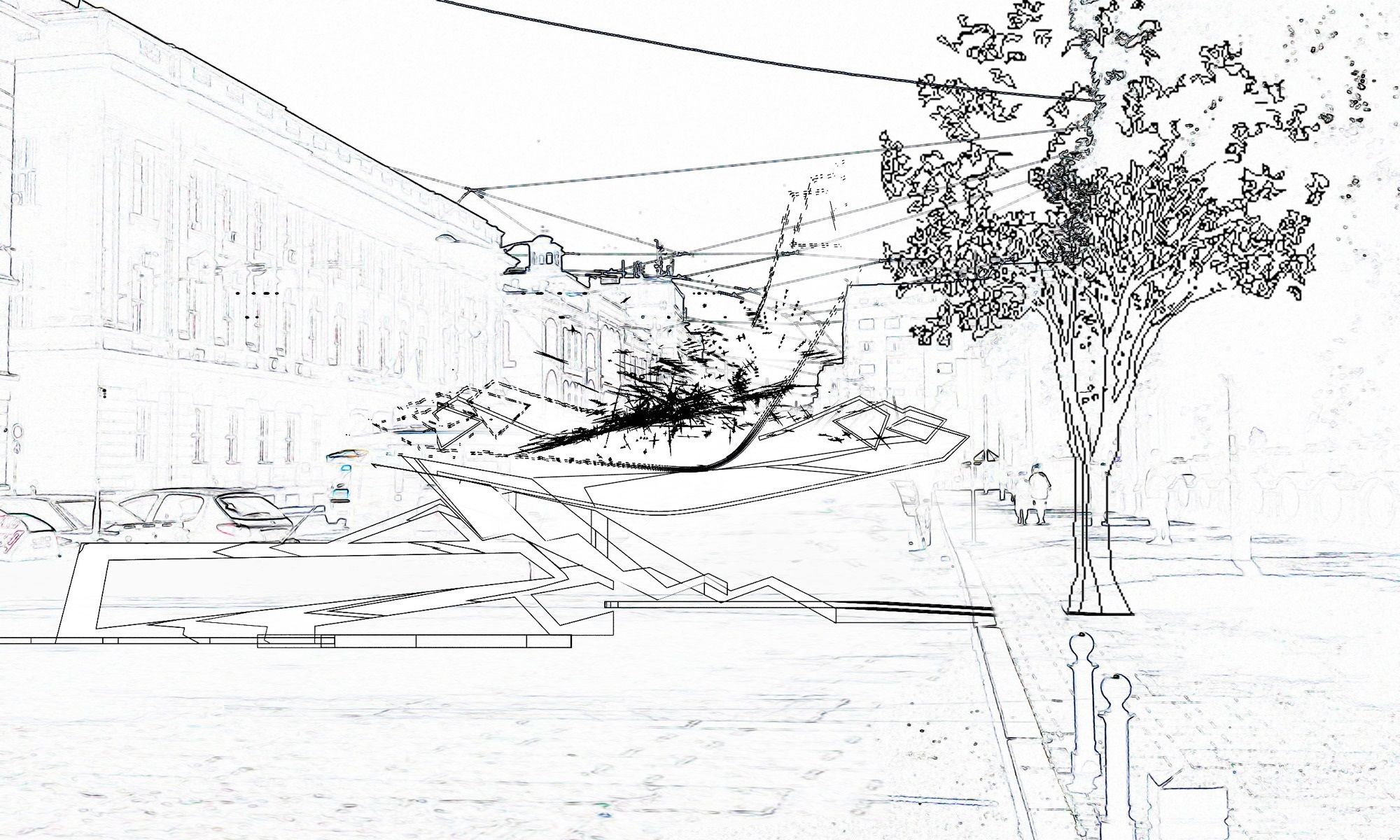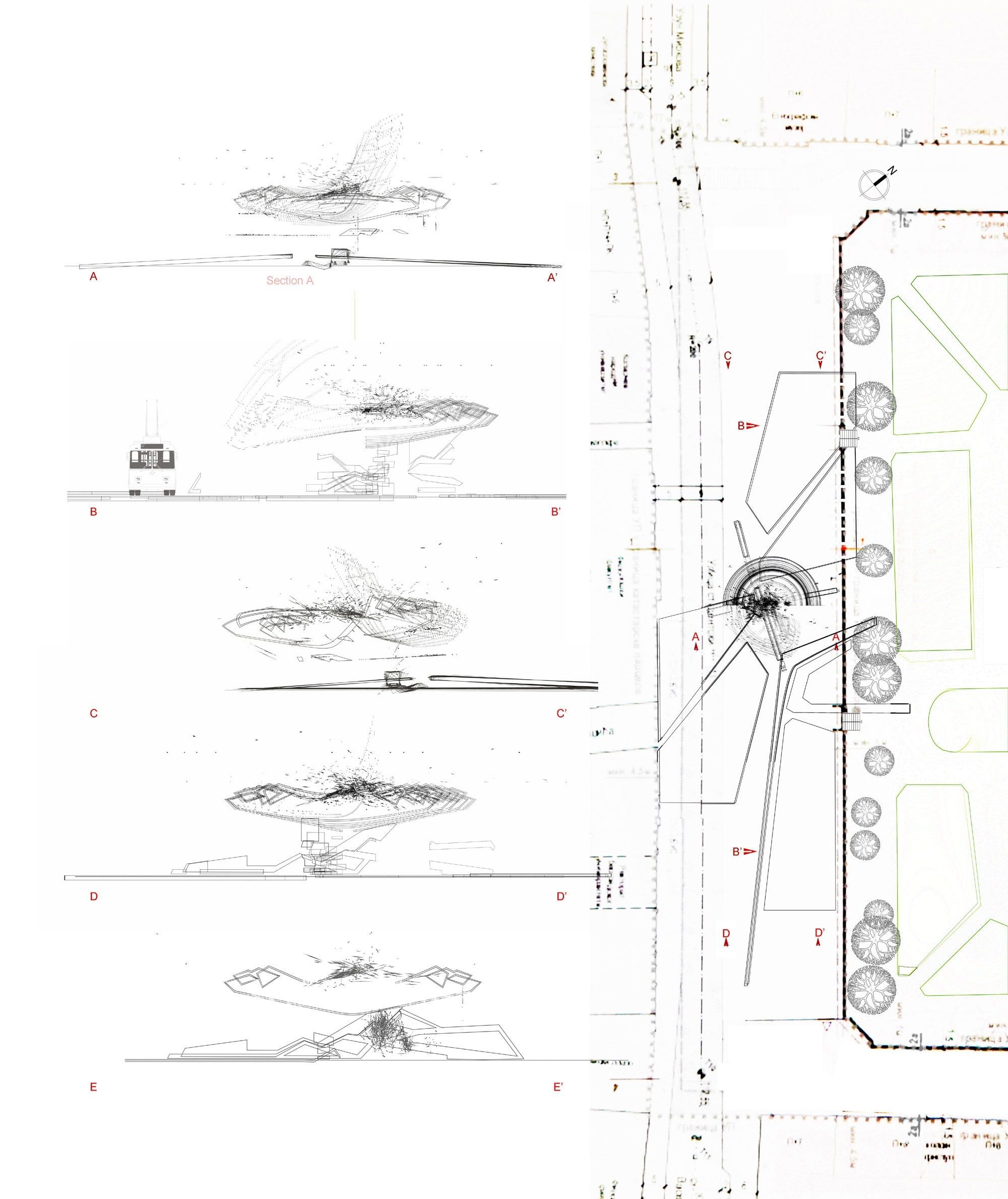Trolleybus Central Terminus Studentski Trg.
Trolleybuses are electric vehicles which makes them more environmentally friendly than fossil fuel or hydrocarbon-based vehicles when implemented in the city. The power is not free as it has to be produced at centralised power plants, however, it is produced more efficiently making it more responsive to pollution control rather than individual vehicles exhausting noxious gases at street level. A trolleybus draws power from overhead wires using spring-loaded trolley poles made from wood and metal, which complete the electrical circuit by transferring electricity from a “live” overhead wire to the control and the electric traction motors of the trolley bus, a type of current collector.Each trolley pole, trolley bus elevation, tire and overhead wire will contain 3d printed piezoelectric cells generating electrical energy from pressure deformation in the semiconductors for on-board electronics. The city of Belgrade uses trolleybuses as one of it’s major modes of public transport with an extensive route stretching across the city and the suburbs.
The project uses printed piezoelectric cells applied to the main body of the helix structure generating electricity from trolleybus pulses as they pass through the station; piezoelectric materials generate electrical energy when subjected to mechanical strain, vibrational-energy harvesting is used in this design, the piezoelectric crystals are deformed by air flow and pressure exerted from the trolleybus pulses and overhead wire movement.
The piezocells are stacked within the folded cross section which further increases the vibration of the trolley-poles and their effects on deforming the semi-conductor cells, in turn amplifying the output; wind and rain also vibrate the steel wire cluster which connects the project to existing overhead wires, these vibrations amplify the piezoelectric cell displacements as a result of the kinetic movement; the design acts as an electrical amplifier, providing street lighting, Internet WiFi access for immediate neighborhoods as well as offer an adaptive power port, commuters will be able to charge mobiles and smart cars at these trolleybus station gardens. The piezoelectric cells generate electric current stimulating roots for plant growth, similar to solar cells and photosynthesis, there is a park next to the terminal which will also benefit by powering the irrigation and sprinklers.
The trolleybus garden acts as a capacitor and transistor to step up the harnessed electrical energy, transforming AC current from the piezoelectric cells to DC current before it can be cached in the capacitor ready for distribution.
The architecture supports the idea that energy harvesting, smart materials and systems need to be an inherent part of the design process, dictating the terms of the architectural design criteria rather than referring to sustainable technology as a polite afterthought. This project follows the Piezoelectric Playground also in belgrade.
Courtesy of Margot Krasojevic
Courtesy of Margot Krasojevic
Courtesy of Margot Krasojevic
Courtesy of Margot Krasojevic
Courtesy of Margot Krasojevic
Courtesy of Margot Krasojevic
Courtesy of Margot Krasojevic
Courtesy of Margot Krasojevic
Courtesy of Margot Krasojevic
Courtesy of Margot Krasojevic
Courtesy of Margot Krasojevic
Courtesy of Margot Krasojevic
Courtesy of Margot Krasojevic
Courtesy of Margot Krasojevic
Courtesy of Margot Krasojevic
Courtesy of Margot Krasojevic


